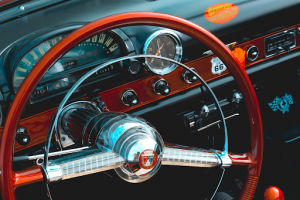 For Disabled Drivers it can be a desolate feeling if your ability to drive a vehicle is taken away because of a physical disability. Driving is one of the staples of our freedom to go and come as we please, and feeling immobile and dependent on others to drive us is not the way most people want to get around. But your physical disability doesn’t have to stop you from driving. Whether it’s a car, van, or truck, the vehicle can be adapted to suit a disabled driver where they can drive comfortably and safely.
For Disabled Drivers it can be a desolate feeling if your ability to drive a vehicle is taken away because of a physical disability. Driving is one of the staples of our freedom to go and come as we please, and feeling immobile and dependent on others to drive us is not the way most people want to get around. But your physical disability doesn’t have to stop you from driving. Whether it’s a car, van, or truck, the vehicle can be adapted to suit a disabled driver where they can drive comfortably and safely.
We all have technology to thank for that. Major and broad advancements have opened opportunities for the disabled to drive cars using hand controls, and other devices. Depending on the disability, you can adapt your old car or purchase a new one that meets the needs of the disability to make driving for you possible.
In most cases, adaptations can be fitted with the original controls. Adaptations can be of variety, from a simple bolt-on attachment to a major replacement of the gearbox and driving controls in order to provide a system suitable for you. Most of the adaptations happen in: Wheelchair hoists, hand controls, electronic accelerators, left pedal accelerators, pedal modifications, steering aids, and remote control.
Wheelchair hoists: Your major disability might be more about getting into and out of a car. For Disabled Drivers there are several types of wheelchair hoists offered by Brook Miller Mobility who can also help you with any repairs needed in these wheelchairs, as well as provide you with many other adaptations and adjustment solutions. If you’re living in the UK, they will also help you to learn more about the Motability Scheme, which is a popular and successful program for getting a mobility car.
Hand controls: Many disabilities affect the legs, making the use of the standard pedals difficult or impossible. But whatever you can do with the pedals, your hands can do using hand controls to control the speed of the car. Disabled drivers make the most of these levers will be near the steering wheel. You will find that they are designed to follow the natural movement of your arm-hand movement. If that isn’t suitable, you can still find hand controls that work a bit differently, such as by squeezing, instead of a back and forth or side to side movements.
Electronic accelerators: You can also use electronic accelerators that come in different types; trigger, over the ring, under the ring and ghost ring. You pull with your finger to accelerate on a trigger ring, and push to brake. An over ring is fitted in front of the steering wheel, where it’s pushed down to accelerate. The under ring accelerator is fitted behind the steering wheel, and you pull it towards the steering wheel to accelerate. The last type is the ghost ring accelerator, also fitted behind the steering wheel, yet the movement is done side to side to accelerate.
Left pedal: To drive without the use of the right leg, an accelerator pedal is installed on the left of the brake pedal. This left foot gas pedal requires professional installation in which modifications are done for the braking and acceleration systems. This provides a solution for amputees or those who have lost or have a weak nerve sensation on their leg when pressing on the brakes.
Pedal modifications: You can install higher pedals, where the pedals would be raised. There is also pedal extensions; flip up, foot steering, raised floor, position re-location and other forms of adjustments.
Steering aids: There are various solutions if you have problems handling a standard steering wheel. For example, a steering wheel ball can be fitted, giving you more control while steering the car, or easy-to-grip steering knobs can be used. These are designed to help in one-handed steering or if you have difficulty in arm-hand movements.
 Remote control: Also available is the use of a single remote control panel on the steering wheel used for a variety of functions of the vehicle. These functions could include the wipers, headlights, and indicators.
Remote control: Also available is the use of a single remote control panel on the steering wheel used for a variety of functions of the vehicle. These functions could include the wipers, headlights, and indicators.
You’ll find brand name cars that do design Motability cars, but you’ll want to practice driving yours for your own safety and the safety of others on the road. Many disabled drivers have to make trips to their doctor for checkups and must depend on others to drive them. Yet, these cars make it easier for daily driving routines, or city center or even long journey driving. Good adaptations and adjustments on your car will give you back the freedom to drive in the most comfortable and safest way possible, and will give you back your independence.










